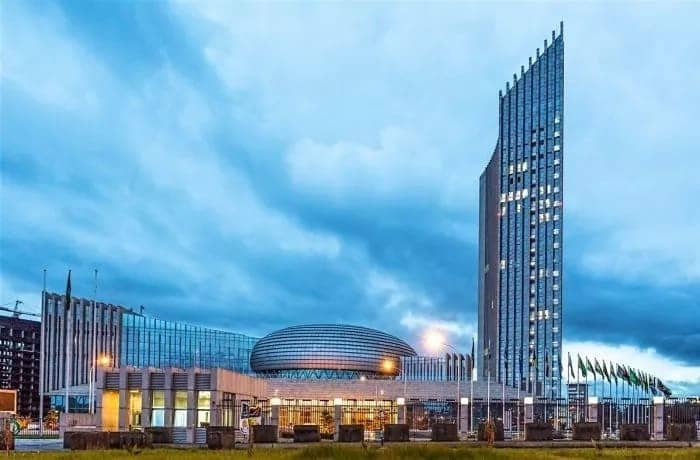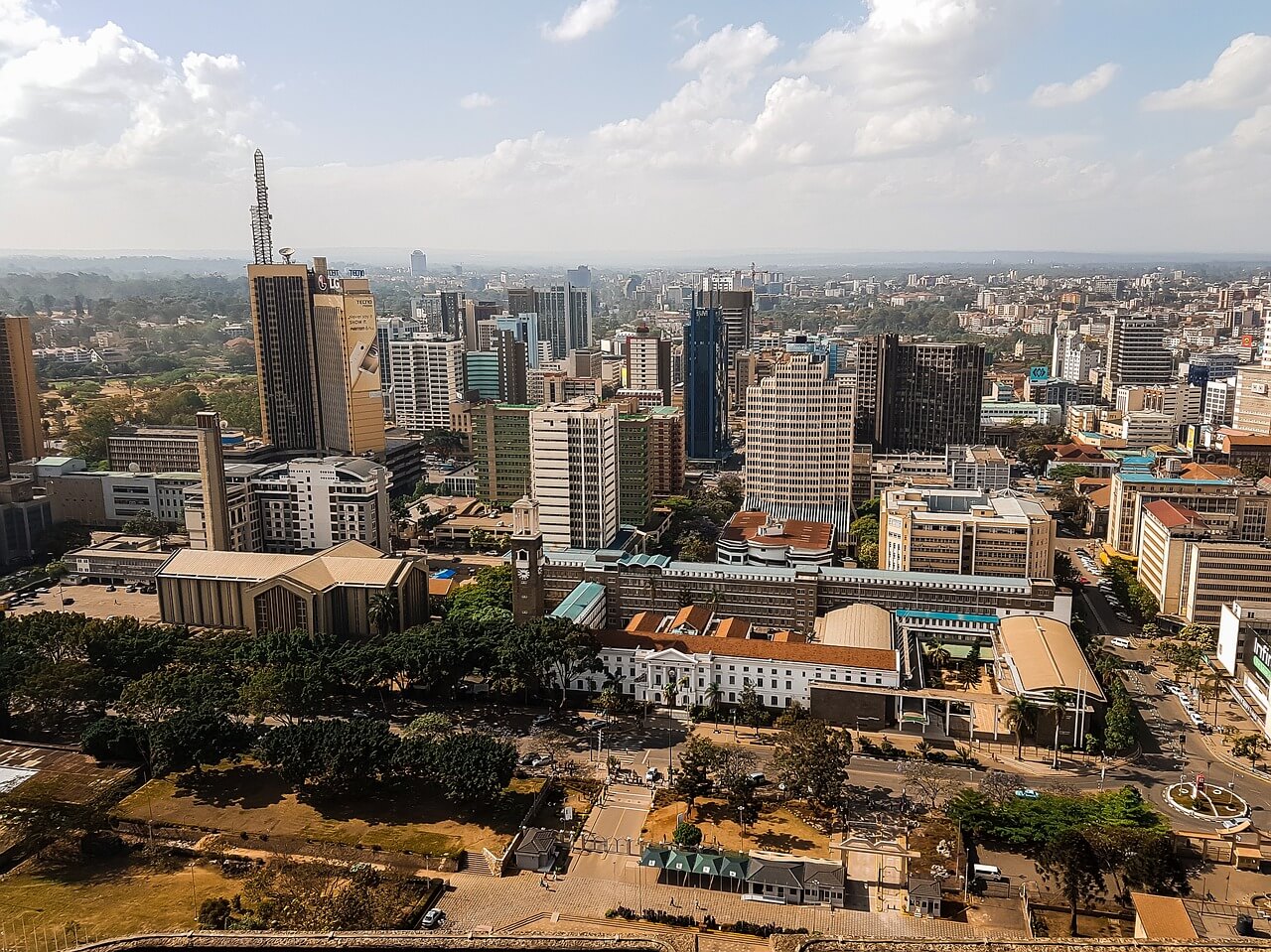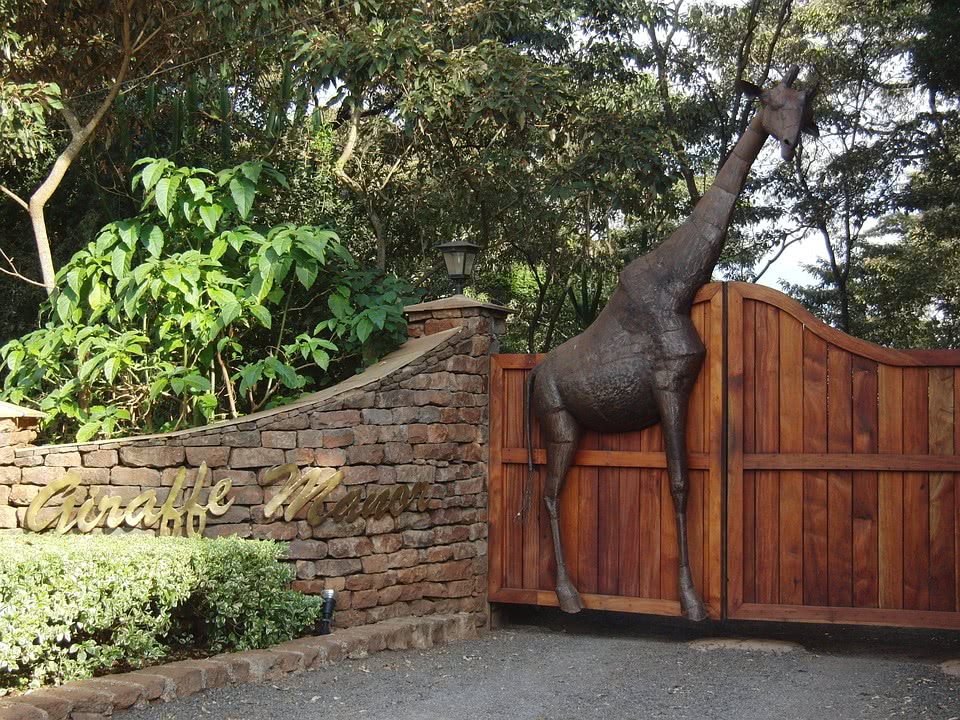Updated on July 9, 2024: Enhanced the article with detailed descriptions of the capital cities of Kenya, Uganda, Tanzania, Rwanda, Burundi, South Sudan, Ethiopia, Djibouti, Eritrea, and Somalia, providing insights into their unique features, cultural significance, and economic importance.
Here is a list of East African Countries and their Capital cities as of 2019. According to the United Nations, 20 countries make up East Africa.
East African countries were colonised by Germany, Britain, Belgium, and French. They all gained independence from their colonial masters and have since grown both economically and politically.
East African Countries and Their Capitals
Kenya – Nairobi
Nairobi, the capital city of Kenya, spans an area of 696 km² and is home to over 3 million residents. It uniquely features the Nairobi National Park, making it the only capital city in the world with a national park within its boundaries. The park, covering 117 km², is a sanctuary for a variety of wildlife including giraffes, lions, zebras, baboons, leopards, and cheetahs.
Besides its natural beauty, the park is a popular venue for bush dinners, family gatherings, and film production. Located just a short drive from Nairobi’s Central Business District, it offers a serene escape from the city’s hustle and bustle.
Uganda – Kampala
Agriculture is the backbone of Uganda’s economy, with the country exporting coffee, maize, tea, fish, flowers, cotton, and other agricultural products. Uganda’s capital, Kampala, covers an area of 189 km² and is the most populous city in the country.
A beloved dish in this East African nation is Matoke, which visitors enjoy immensely. Uganda is often referred to as the “Pearl of Africa” due to its stunning natural beauty. Despite the increase in automobiles, bicycles remain a common mode of transport in major cities and towns like Kampala, Jinja, Entebbe, and Mbale.
Tanzania – Dodoma
Universally known for the Serengeti National Park and the wildebeest migration, Tanzania is home to about 56 million people. Mt. Kilimanjaro, the highest mountain in Africa with an elevation of 5,895 meters, is also located in Tanzania. Until 1974, Dar es Salaam was the capital of Tanzania. Following a referendum, the capital was moved to Dodoma to provide a more central location for administrative functions.
Rwanda – Kigali
Since gaining independence, Rwanda, a landlocked country known for the tragic 1994 genocide, has significantly improved its international image and general outlook. Kigali, the capital, has a population of about 1 million and is renowned as one of the cleanest and most beautiful cities in the world.
Banning non-biodegradable plastic in 2008 is one of the many initiatives contributing to the city’s cleanliness. Rwanda is home to 23 lakes and three national parks. The country’s mountainous terrain has earned it the title “Land of a Thousand Hills.”
Burundi – Bujumbura
Bujumbura, the capital of Burundi, has a population of over half a million and covers an area of 86.52 km². As the main port on Lake Tanganyika, it plays a crucial role in the country’s economy. Though sometimes considered a Central African country, Burundi shares many cultural and geographical ties with East Africa.
Visitors to Burundi can explore the Livingstone-Stanley Monument, Rusizi National Park, Kibira National Park, and other scenic locations. Additionally, interacting with the friendly locals offers a chance to learn about the rich culture and enjoy the country’s delicious cuisine.
South Sudan – Juba
South Sudan seceded from Sudan in 2011 due to political and economic conflicts and ongoing civil wars. As a result, South Sudan is technically Africa’s youngest country. A peace deal was signed after a referendum, granting the South Sudanese people independence.
The capital of South Sudan is Juba, which covers an area of 52 km². The country has a population of slightly more than 12 million people, and the currency used is the South Sudanese pound.
Ethiopia – Addis Ababa
Ethiopia is the most populous country in East Africa, with a population of nearly 105 million people, making it the second most populous in Africa after Nigeria, which has a population of 181 million.
The capital of Ethiopia is Addis Ababa, and the currency is the Ethiopian Birr. Ethiopia is one of the three countries in the ‘Horn of Africa,’ along with Djibouti, Eritrea, and Somalia. Until 1992, Ethiopia had a coastline, but it became landlocked when Eritrea gained independence and acquired the Red Sea coast.
Djibouti – Djibouti
Afar is the recognized national language of Djibouti, with French, Somali, and Arabic also being widely used. The country shares its name with its capital, Djibouti. Geographically, Djibouti serves as a gateway to Africa from the Arabian Peninsula. Covering an area of just 23,200 km², Djibouti is one of the smallest countries in Africa, with a total population of around 1 million people.
Eritrea – Asmara
Asmara, the capital of Eritrea, is renowned for its beautiful Italian architecture and is often referred to as “Africa’s Little Rome.” The city is adorned with Italian art decorations and buildings, reflecting its colonial past. The currency used in Eritrea is the Eritrean nakfa. The official languages spoken in the country are Tigrigna, Arabic, and English.
Somalia – Mogadishu
The map of East African countries is incomplete without Somalia. Its capital, Mogadishu, covers an area of 91 km² and has a population of 1.2 million. Unlike other East African nations, Somalia is largely homogeneous, with a single ethnic community divided into different clans. The predominant religion in the country is Sunni Islam.
Other East African Countries
- Mozambique – Maputo
- Madagascar – Antananarivo
- Malawi – Lilongwe
- Zambia – Lusaka
- Zimbabwe – Harare
- Comoros – Moroni
- Mauritius – Port Louis
- Seychelles – Victoria
- Reunion – Saint-Denis
- Mayotte – Mamoudzou
Interesting Facts About the East Africa Region
- The two tallest mountains on the African continent, Mount Kilimanjaro and Mount Kenya are located in East Africa.
- Lake Tanganyika, the second deepest lake on the earth, is in East Africa.
- In the 1400s Portuguese explorers became the first Europeans to explore East Africa; these explorations included modern-day Tanzania, Kenya, and Mozambique.
- In the late 1800s through the early 1900s European countries competed with each other to conquer and control vast regions of East Africa; this became known as “the Scramble for Africa”.
- The clothing worn by the people of East Africa varies. In urban areas many of the people where western-style dress. In rural areas, traditional clothing is worn by many people; often including bright colours and wraps.
- East Africa has some of the incredible wildlife in the world. In this region of Africa, you will find numerous animals including lions, zebras, wildebeest, cheetahs, hyenas, leopards, and well over one thousand species of birds.
- Running through East Africa is the Great Rift Valley. This trench, which is approximately 3,700 miles (6,000 kilometres) long, was formed by vigorous geological activity that resulted in the earth’s crust sinking. The Great Rift Valley is home to spectacular wildlife and fantastic scenery.
- Although bordered in a region full of turmoil, East Africa is perhaps the most peaceful place you can find on earth.
Interesting Facts About the East African Countries
- Lake Victoria, the largest lake in Africa and the largest tropical lake in the world, is located in Tanzania, Uganda, and Kenya.
- Kenya is often referred to as the “Safari Capital of the World” where tourist flock to see such animals such as lions, cheetahs, and elephants.
- The country of Seychelles is a group of small islands (an archipelago) located off the coast of East Africa in the Indian Ocean.
- Kenya and Tanzania are home to one of the modern wonders of the world – The Wildebeest Migration at the Mara River in Maasai Mara National Reserve, Kenya to Serengeti National Park in Tanzania.
FAQs – East Africa Countries
How many countries are called East Africa?
The UN subregion of East Africa consists of 20 countries in the eastern part of the continent. These countries include some of the poorest nations in the world situated in the Horn of Africa and Great Lakes regions.
What is the difference between East Africa and Eastern Africa?
Eastern Africa, part of sub-Saharan Africa comprising two traditionally recognized regions: East Africa, made up of Kenya, Tanzania, and Uganda; and the Horn of Africa, made up of Somalia, Djibouti, Eritrea, and Ethiopia.
Which is the biggest country in East Africa?
Tanzania is the largest country in East Africa and includes the islands of Zanzibar, Pemba, and Mafia. About twice the size of California, this African country is bordered by the Indian Ocean and eight countries: Kenya, Uganda, Rwanda, Burundi, Democratic Republic of Congo, Zambia, Malawi, and Mozambique.
What is the largest tribe in East Africa?
Kikuyu is the largest ethnic community in Kenya. The Sukuma is the biggest in Tanzania, the Baganda in Uganda and the Dinka in South Sudan. The Luo, however, is the largest in East Africa with members in Kenya numbering 5.5 million, Tanzania 2.5 million, Uganda 3.8 million, South Sudan at 1.7 to 2 million.
Conclusion
Exploring the diverse and vibrant countries of East Africa, each with its unique capital offers a fascinating glimpse into the region’s rich cultural and historical tapestry. East Africa’s capitals are as varied as the landscapes they inhabit. East Africa promises an unforgettable journey through its dynamic cities and breathtaking scenery. Discover the heart of Africa by delving into its captivating capitals.




